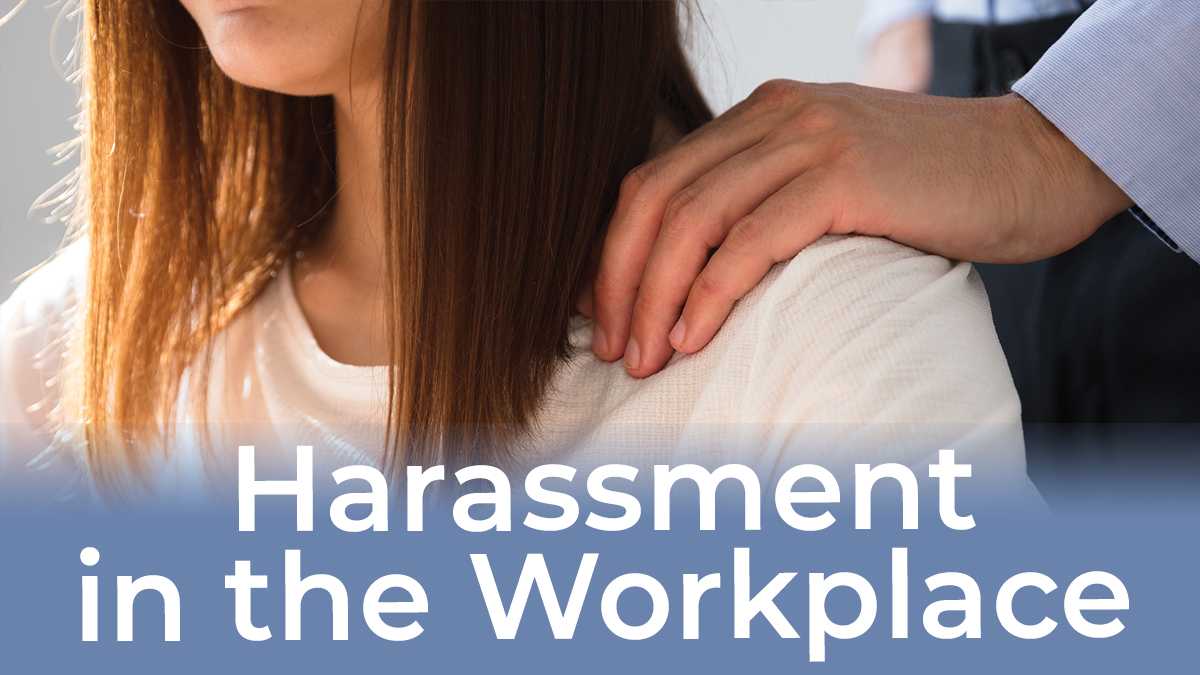
Harassment in the Workplace Series: Part 1 – Fostering Harassment-Free Facilities
Harassment of any kind, especially sexual harassment, certainly is a sensitive subject but one that ABC feels is important to discuss. As the credentialing body for many O,P&P professionals and practices, we are committed to establishing and advocating for the highest patient care and organizational standards in O,P&P. As a leader in the profession, we also have the unique opportunity to help promote an anti-harassment culture. We hope you will join us in learning more through our two-part article series and harassment focused podcast.
Harassment in the Workplace Series: Part 1 – Fostering Harassment-Free Facilities
While we generally think of harassment as being an issue between two people, there is more to it than that. According to Jackson Katz, PhD, a leading activist, scholar and educator on issues of gender, race and violence, harassment and abuse are not only about the victim and the harasser, but also about everyone else – the bystanders. He defines bystanders as “anyone who plays some role in an act of harassment, abuse or violence -- but is neither the perpetrator nor the victim. They are someone who is present and thus, potentially in the position to discourage, prevent or interrupt an incident.” Katz suggests that positive cultural changes will only begin to take hold when leaders among these bystander groups speak up, challenge and create an environment where harassing behaviors are clearly seen as unacceptable.
So, what role do employers, managers and other authority figures at O,P&P facilities play in preventing harassment and contributing to the culture change? Dr. Katz suggests it starts with leaders. Since a culture change isn’t likely to occur overnight, it’s also important to focus on ways to prevent harassment now. According to the Equal Employment Opportunity Commission (EEOC), prevention is the best defense against harassment in the workplace. The EEOC suggests taking the following steps:
- Have a harassment policy that explicitly outlines what constitutes harassment, specifically sexual harassment, and declares that it will not be tolerated. The policy should be clearly and regularly communicated to employees and effectively implemented. Employers should affirmatively raise the subject with all supervisory and non-supervisory employees, express their strong disapproval of harassment and explain the sanctions for harassment.
- Have a procedure for resolving harassment complaints. The procedure should be designed to "encourage victims of harassment to come forward" and should not require a victim to complain first to the offender if it happens to be the supervisor. It should ensure as much confidentiality as possible and provide effective remedies, including protecting victims and witnesses against retaliation.
- Investigate all complaints or alleged harassment in the workplace promptly and thoroughly. The employer should take immediate and appropriate corrective action by doing whatever is necessary to end the harassment, make the victim whole by restoring lost employment benefits or opportunities, and prevent the misconduct from recurring.
- Develop a plan for disciplinary actions against the offending supervisor or employee, ranging from reprimand to discharge. Generally, the corrective action should reflect the severity of the conduct. The employer should make follow-up inquiries to ensure the harassment has not resumed and the victim has not suffered retaliation.
- Establish a procedure for raising complaints and communicate to everyone both the employee’s right to raise a complaint and how to do so. The procedure should include multiple pathways for complaints such as to HR, a CEO and/or another formal method for confidential complaints.
Carmen Feinberg, an experienced Human Resources executive-level consultant, takes these steps even further in her article Employers' Cliffs Notes For Creating Sexual Harassment Policies In A #MeToo World. Feinberg provides specific suggestions about employee training such as explaining zero tolerance harassment policy and procedures during new employee onboarding, using various methods of communicating harassment policies, providing specific civility and bystander intervention training, training employees and supervisors separately and conducting formal training at least twice annually for managers and supervisors.
Whether you look at harassment from a legal or ethical viewpoint, having a clear anti-harassment policy and environment in place protects everyone involved and makes good business sense. Harassment isn’t a new issue by any means, but it has certainly been brought to the forefront in recent years and it is up to everyone – leaders and bystanders alike – to prevent harassment and help shift the culture.
Here is a list of additional harassment resources and guides for employers.
Subscribe to ABC CredCast
 Listen on Apple Podcasts (opens in a new tab)
Listen on Apple Podcasts (opens in a new tab)
 Listen on Google Podcasts (opens in a new tab)
Listen on Google Podcasts (opens in a new tab)







